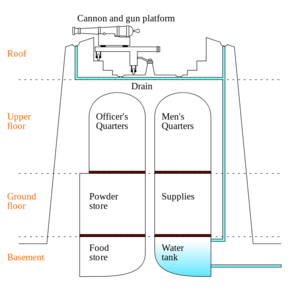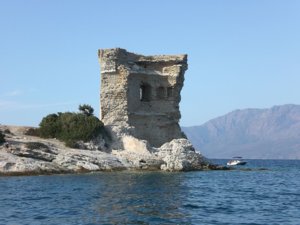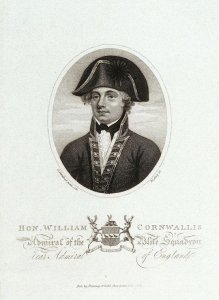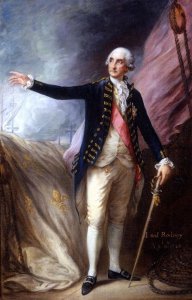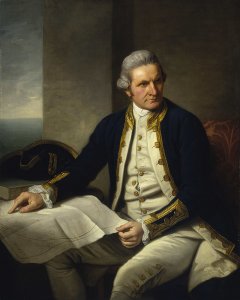Today in Naval History - Naval / Maritime Events in History
30th of January
please use the following link and you will find the details and all events of this day ..... in the following you will find some of the events
1761 - HMS Venus (32) and HMS Juno (32) took french La Brune (32), to the westward of Scilly
Brune was a Blonde class 30-gun frigate of the French Navy. She took part in the naval battles of the Seven Year War, and was captured by the British. Recommissioned in the Royal Navy as the 32-gun HMS Brune, she served until 1792.


Scale: 1:48. A contemporary full hull model of a ‘Richmond’-class 32-gun frigate (circa 1757), built in the Georgian style.
1794 - HMS Amphitrite (24), Cptn. Anthony Hunt, wrecked after striking an uncharted submerged rock whilst on passage between Elba and Livorno.
HMS Amphitrite was a 24-gun Porcupine-class sixth-rate post ship of the Royal Navy. She served during the American Revolution primarily in the economic war. On the one hand she protected the trade by capturing or assisting at the capture of a number of privateers, some of which the Royal Navy then took into service. On the other hand, she also captured many American merchant vessels, most of them small. Unfortunately, Amphrite was wrecked early in 1794.
Construction and commissioning
Amphitrite was ordered on 8 January 1777 from Deptford Dockyard, and laid down there on 2 July 1777. She was built under the supervision of Master Shipwright Adam Hayes, and was launched on 28 May 1778. She was commissioned into navy service on 22 July 1778, having cost a total of £12,737.6.6d to build, including the cost of fitting out and coppering.

Plan showing the body plan, sheer lines, and longitudinal half-breadth for Pelican (1777). Annotated with Isaac Rogers (bottom right). From Tyne & Wear Archives Service, Blandford House, Blandford Square, Newcastle upon Tyne, NE1 4JA.
1809 - Start of Sir A. Cochrane's campaign to capture Martinique.
The invasion of Martinique of 1809 was a successful British amphibious operation against the French West Indian island of Martinique that took place between 30 January and 24 February 1809 during the West Indies Campaign 1804–1810 of the Napoleonic Wars. Martinique, like nearby Guadeloupe, was a major threat to British trade in the Caribbean, providing a sheltered base from which privateers and French Navy warships could raid British shipping and disrupt the trade routes that maintained the British economy. The islands also provided a focus for larger scale French operations in the region and in the autumn of 1808, following the Spanish alliance with Britain, the Admiralty decided to order a British squadron to neutralise the threat, beginning with Martinique.

1809 – Ballahoo-class cutter HMS Haddock (4), Ch. Win. Selwyn, captured by the French brig Le Genie (16) in the Channel.
HMS Haddock was a Royal Navy Ballahoo-class schooner of four 12-pounder carronades and a crew of 20. The prime contractor for the vessel was Goodrich & Co., in Bermuda, and she was launched in 1805.
“On Thursday 21st inst launched off the stocks at Mr Isaac Skinner's shipyard his Majesty's Schooner "Haddock". The above schooner is said (by every merchant and shipbuilder) to be the completest vessel ever built in Bermuda”— The Royal Gazette, 30 March 1805
Haddock only sailed for some three to four years before the French captured her in 1809 in the English Channel. This schooner was the only Royal Navy ship ever to use the name.

Scale: 1:48. A plan showing body plan with stern board outline, sheer lines with inboard detail, and longitudinal half-breadth of 'Haddock' (1805), a four to six gun schooner, as taken off in October 1805 and modified on her refit. This plan was used for the subsequent Cuckoo class of gun schooners (1805) consisting of 'Magpie' (1806), 'Jackdaw' (1806), 'Cuckoo' (1806), 'Wagtail' (1806), 'Woodcock' (1806), 'Wigeon' (1806), 'Sealark' (1806), 'Rook' (1806), 'Landrail' (1806), 'Pigeon' (1806), 'Crane' (1806), 'Quail' (1806).
1858 - John Gilpin, an 1852 clipper in the California trade, abandoned after collision with iceberg
John Gilpin was an 1852 clipper in the California trade, named after the literary character John Gilpin.
The ship was known for its 1852 race against the clipper Flying Fish, and for its collision with an iceberg.

LESLIE A. WILCOX (BRITISH 1904-1982). THE AMERICAN CLIPPER SHIP “JOHN GILPIN” LEAVING BOSTON.
1862 - The first U.S. Navy ironclad warship, USS Monitor, is launched.
Commissioned a month later, she soon engages in battle against CSS Virginia, the first battle between ironclad warships.
USS Monitor was an iron-hulled steamship. Built during the American Civil War, she was the first ironclad warship commissioned by the Union Navy. Monitor is most famous for her central role in the Battle of Hampton Roads on 9 March 1862, where, under the command of Lieutenant John Worden, she fought the casemate ironclad CSS Virginia (built on the hull of the former steam frigate USS Merrimack) to a standstill. The unique design of the ship, distinguished by its revolving turret which was designed by American inventor Theodore Timby, was quickly duplicated and established the monitor type of warship.

1895 - SS Elbe, a transatlantic ocean liner for the Norddeutscher Lloyd, foundered on the night of 30 January 1895 following a collision in the North Sea with the loss of 334 lives.
SS Elbe was a transatlantic ocean liner built in the Govan Shipyard of John Elder & Company, Ltd, Glasgow, in 1881 for the Norddeutscher Lloyd of Bremen. She foundered on the night of 30 January 1895 following a collision in the North Sea with the loss of 334 lives

1945 – World War II: The Wilhelm Gustloff, overfilled with German refugees, sinks in the Baltic Sea after being torpedoed by a Soviet submarine, killing approximately 9,500 people, half of them children.
- The largest loss of life in a single ship sinking in history -
MV Wilhelm Gustloff was a German military transport ship which was sunk on 30 January 1945 by Soviet submarine S-13 in the Baltic Sea while evacuating German civilians, German officials, refugees from Prussia, Lithuania, Latvia, Poland, Estonia and Croatia and military personnel from Gotenhafen (now Gdynia) as the Red Army advanced. By one estimate, 9,400 people died, which makes it the largest loss of life in a single ship sinking in history.
Constructed as a cruise ship for the Nazi Kraft durch Freude (Strength Through Joy) organisation in 1937, she had been requisitioned by the Kriegsmarine (German navy) in 1939. She served as a hospital ship in 1939 and 1940. She was then assigned as a floating barracks for naval personnel in Gdynia (Gotenhafen) before being put into service to transport evacuees in 1945.

1959 – MS Hans Hedtoft, said to be the safest ship afloat and "unsinkable" like the RMS Titanic, strikes an iceberg on her maiden voyage and sinks, killing all 95 aboard.
MS Hans Hedtoft was a Danish liner that struck an iceberg and sank on 30 January 1959 on her maiden voyage off the coast of Western Greenland. The only piece of wreckage ever found was a lifebelt. As of 2019, she remains the last known ship sunk by an iceberg with casualties.

30th of January
please use the following link and you will find the details and all events of this day ..... in the following you will find some of the events
Naval/Maritime History - 27th of August - Today in Naval History - Naval / Maritime Events in History
Today in Naval History - Naval / Maritime Events in History 29 January 1801 - HMS Bourdelais (24), Cptn. Thomas Manby, sunk French national corvette La Curieuse (18), Cptn. Radelet, off Barbados Bordelais (or Bourdolaise, or Bourdelais, or Bordolois), launched in 1799, was a privateer corvette...
shipsofscale.com
1761 - HMS Venus (32) and HMS Juno (32) took french La Brune (32), to the westward of Scilly
Brune was a Blonde class 30-gun frigate of the French Navy. She took part in the naval battles of the Seven Year War, and was captured by the British. Recommissioned in the Royal Navy as the 32-gun HMS Brune, she served until 1792.
Scale: 1:48. A contemporary full hull model of a ‘Richmond’-class 32-gun frigate (circa 1757), built in the Georgian style.
1794 - HMS Amphitrite (24), Cptn. Anthony Hunt, wrecked after striking an uncharted submerged rock whilst on passage between Elba and Livorno.
HMS Amphitrite was a 24-gun Porcupine-class sixth-rate post ship of the Royal Navy. She served during the American Revolution primarily in the economic war. On the one hand she protected the trade by capturing or assisting at the capture of a number of privateers, some of which the Royal Navy then took into service. On the other hand, she also captured many American merchant vessels, most of them small. Unfortunately, Amphrite was wrecked early in 1794.
Construction and commissioning
Amphitrite was ordered on 8 January 1777 from Deptford Dockyard, and laid down there on 2 July 1777. She was built under the supervision of Master Shipwright Adam Hayes, and was launched on 28 May 1778. She was commissioned into navy service on 22 July 1778, having cost a total of £12,737.6.6d to build, including the cost of fitting out and coppering.
Plan showing the body plan, sheer lines, and longitudinal half-breadth for Pelican (1777). Annotated with Isaac Rogers (bottom right). From Tyne & Wear Archives Service, Blandford House, Blandford Square, Newcastle upon Tyne, NE1 4JA.
1809 - Start of Sir A. Cochrane's campaign to capture Martinique.
The invasion of Martinique of 1809 was a successful British amphibious operation against the French West Indian island of Martinique that took place between 30 January and 24 February 1809 during the West Indies Campaign 1804–1810 of the Napoleonic Wars. Martinique, like nearby Guadeloupe, was a major threat to British trade in the Caribbean, providing a sheltered base from which privateers and French Navy warships could raid British shipping and disrupt the trade routes that maintained the British economy. The islands also provided a focus for larger scale French operations in the region and in the autumn of 1808, following the Spanish alliance with Britain, the Admiralty decided to order a British squadron to neutralise the threat, beginning with Martinique.
1809 – Ballahoo-class cutter HMS Haddock (4), Ch. Win. Selwyn, captured by the French brig Le Genie (16) in the Channel.
HMS Haddock was a Royal Navy Ballahoo-class schooner of four 12-pounder carronades and a crew of 20. The prime contractor for the vessel was Goodrich & Co., in Bermuda, and she was launched in 1805.
“On Thursday 21st inst launched off the stocks at Mr Isaac Skinner's shipyard his Majesty's Schooner "Haddock". The above schooner is said (by every merchant and shipbuilder) to be the completest vessel ever built in Bermuda”— The Royal Gazette, 30 March 1805
Haddock only sailed for some three to four years before the French captured her in 1809 in the English Channel. This schooner was the only Royal Navy ship ever to use the name.
Scale: 1:48. A plan showing body plan with stern board outline, sheer lines with inboard detail, and longitudinal half-breadth of 'Haddock' (1805), a four to six gun schooner, as taken off in October 1805 and modified on her refit. This plan was used for the subsequent Cuckoo class of gun schooners (1805) consisting of 'Magpie' (1806), 'Jackdaw' (1806), 'Cuckoo' (1806), 'Wagtail' (1806), 'Woodcock' (1806), 'Wigeon' (1806), 'Sealark' (1806), 'Rook' (1806), 'Landrail' (1806), 'Pigeon' (1806), 'Crane' (1806), 'Quail' (1806).
1858 - John Gilpin, an 1852 clipper in the California trade, abandoned after collision with iceberg
John Gilpin was an 1852 clipper in the California trade, named after the literary character John Gilpin.
The ship was known for its 1852 race against the clipper Flying Fish, and for its collision with an iceberg.
LESLIE A. WILCOX (BRITISH 1904-1982). THE AMERICAN CLIPPER SHIP “JOHN GILPIN” LEAVING BOSTON.
1862 - The first U.S. Navy ironclad warship, USS Monitor, is launched.
Commissioned a month later, she soon engages in battle against CSS Virginia, the first battle between ironclad warships.
USS Monitor was an iron-hulled steamship. Built during the American Civil War, she was the first ironclad warship commissioned by the Union Navy. Monitor is most famous for her central role in the Battle of Hampton Roads on 9 March 1862, where, under the command of Lieutenant John Worden, she fought the casemate ironclad CSS Virginia (built on the hull of the former steam frigate USS Merrimack) to a standstill. The unique design of the ship, distinguished by its revolving turret which was designed by American inventor Theodore Timby, was quickly duplicated and established the monitor type of warship.
1895 - SS Elbe, a transatlantic ocean liner for the Norddeutscher Lloyd, foundered on the night of 30 January 1895 following a collision in the North Sea with the loss of 334 lives.
SS Elbe was a transatlantic ocean liner built in the Govan Shipyard of John Elder & Company, Ltd, Glasgow, in 1881 for the Norddeutscher Lloyd of Bremen. She foundered on the night of 30 January 1895 following a collision in the North Sea with the loss of 334 lives
1945 – World War II: The Wilhelm Gustloff, overfilled with German refugees, sinks in the Baltic Sea after being torpedoed by a Soviet submarine, killing approximately 9,500 people, half of them children.
- The largest loss of life in a single ship sinking in history -
MV Wilhelm Gustloff was a German military transport ship which was sunk on 30 January 1945 by Soviet submarine S-13 in the Baltic Sea while evacuating German civilians, German officials, refugees from Prussia, Lithuania, Latvia, Poland, Estonia and Croatia and military personnel from Gotenhafen (now Gdynia) as the Red Army advanced. By one estimate, 9,400 people died, which makes it the largest loss of life in a single ship sinking in history.
Constructed as a cruise ship for the Nazi Kraft durch Freude (Strength Through Joy) organisation in 1937, she had been requisitioned by the Kriegsmarine (German navy) in 1939. She served as a hospital ship in 1939 and 1940. She was then assigned as a floating barracks for naval personnel in Gdynia (Gotenhafen) before being put into service to transport evacuees in 1945.
1959 – MS Hans Hedtoft, said to be the safest ship afloat and "unsinkable" like the RMS Titanic, strikes an iceberg on her maiden voyage and sinks, killing all 95 aboard.
MS Hans Hedtoft was a Danish liner that struck an iceberg and sank on 30 January 1959 on her maiden voyage off the coast of Western Greenland. The only piece of wreckage ever found was a lifebelt. As of 2019, she remains the last known ship sunk by an iceberg with casualties.




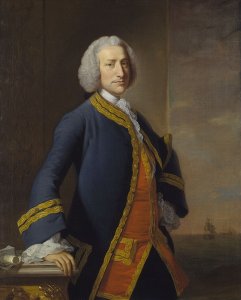

 Line
Line